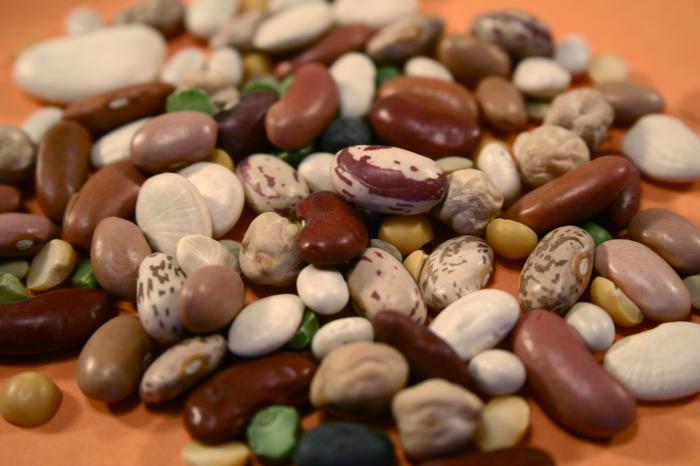
A woman I’ll call Ruth had always enjoyed a healthy sex life and a close friendship with her husband—until recently.
She came to me for help with a problem that was affecting her life in several ways and causing serious consequences to her relationship with her husband. It was an extremely personal situation and very distressing.
Ruth complained of pain during intercourse that was becoming increasingly worse, and her husband didn’t even want to try because the last attempt ended in Ruth crying from the pain.
Not only was Ruth having dryness inside her vagina but also pain on the outside with skin splitting and bleeding. In addition to the pain, she was embarrassed by a foul odor she was noticing “down there.” The smell was especially worse after a successful attempt at intercourse, making her even more worried about intercourse in the future.
Although this was a very personal topic for Ruth, I needed to ask a few background questions to help her find some answers.
I learned she was 54 years old and about two years past her last menstrual period. She was healthy and active with no significant medical problems and no prior surgeries. Ruth was aware she was a good candidate for hormone therapy, but her menopause symptoms were quite minimal, so she chose not to take the therapy. However, she was open to trying different options as necessary.
So far, so good.
As my questions became more personal, I surprised Ruth with one I always ask, “How many times do you wipe after a bowel movement?” In other words, how many times does it take to get clean?
This may sound crass, but it is extremely important and can provide valuable information. Here’s why: There are approximately 100 billion bacteria on one small piece of feces. Vaginal infections are either caused by bacteria or yeast, and the bacteria have to come from somewhere.
With loose stools, you typically must wipe several times (or even use a wet wipe) to get that area clean, inevitably leaving some of those 100 billion bacteria close to the opening of the vagina. Even worse, if you have a rectocele or any vaginal relaxation from childbirth, that can be an entry ramp for bacteria.
To be clear, these bacteria in small amounts on the outside of the vagina don’t smell bad and are invisible, so this concept applies to all of us who are “really careful and clean.”
Ruth assured me she was eating healthy, so she didn’t understand why her stools would be loose. I explained to her that even though her diet was high in fruits and vegetables, it could still be lacking in insoluble fiber, the straw that keeps BMs from being too loose. Coupled with too much caffeine and stress, the result can be a bowel movement that requires several wipes to clean.
So, how does all of this relate to menopause?
Normally, there is a balance in the vagina between “good” bacteria and “bad” bacteria. There are also two environmental factors that come into play: level of moisture and pH. A healthy vagina has a pH between 4 and 4.2. During menopause with low estrogen, the vaginal pH can go up to 5 or 6, creating conditions for “bad” bacteria to grow. To complicate matters, semen has a pH of 7.2. So, if there are any extra “bad” bacteria around from a loose bowel movement, intercourse can cause the bacteria to release their stinky chemicals (amines) and grow in abundance, causing a condition called bacterial vaginosis.
The bacteria do NOT come from your male partner; instead, they are already there and grow like crazy after intercourse. To complicate things even further, there is a skin condition that can occur on the vulva, just outside the vagina, that can result from, or be associated with, chronic bacterial vaginosis. It is called lichen sclerosus and can cause awful skin cracking, bleeding and pain with intercourse.
If Ruth’s experience sounds familiar, there is hope. I have successfully treated many women like Ruth with great results. It just takes common sense and an understanding of the details. I asked Ruth to do the following things:
- Keep track of her fiber intake, adding more fiber if she ate a pint of strawberries or had more coffee in a day. The basic recommendation for fiber is 35 grams per day.
- Drink at least 80 ounces of water per day and even more when she exercised.
- Use a prescription antibiotic cream inside her vagina for five days in a row to treat the infection and then weekly as needed, depending on the frequency of loose bowel movements and intercourse.
- Since Ruth also had lichen sclerosus, I recommended she use a prescription steroid ointment on the outside skin, as directed, and slowly wean it down to once a week.
- Use local estrogen in the form of prescription vaginal estrogen tablets twice a week to keep balance in her vagina.
By taking these steps, Ruth was now in control of her bottom area again, and the menopause-related symptom of vaginal atrophy would not interfere with her relationship with her husband.
Within three months, Ruth was healed and slowly reintroducing intercourse again. It took some effort for her to convince herself and her husband that there would no longer be pain, but, with time, it was all working again.
 /a>
/a>
 /a>
/a>
 /a>
/a>
Great posting Diana. Very relevant.
This was a very helpful article. Thank you and for suggesting the need for a high fiber diet and drinking lots of water.
It’s nice to be able to go back and review what we have already talked about. Very helpful!